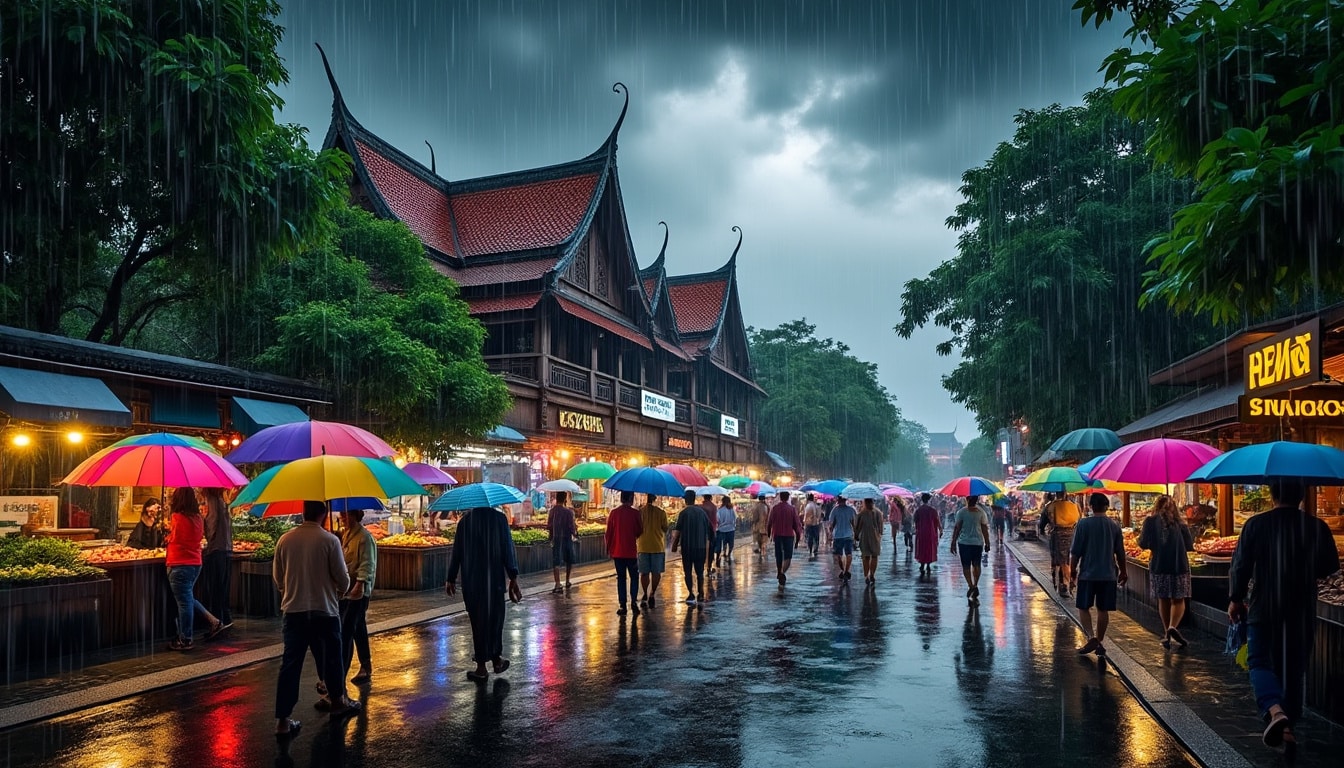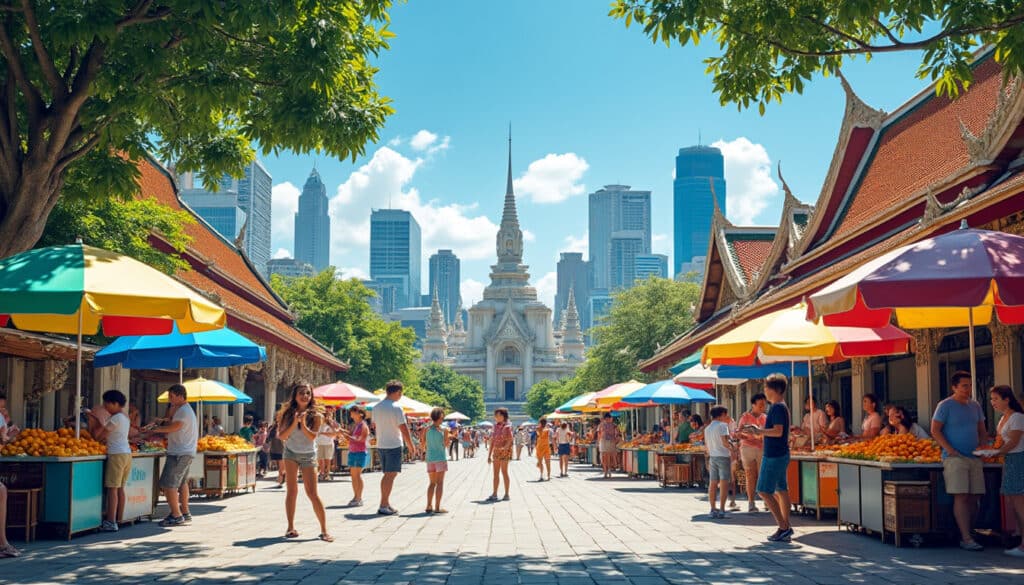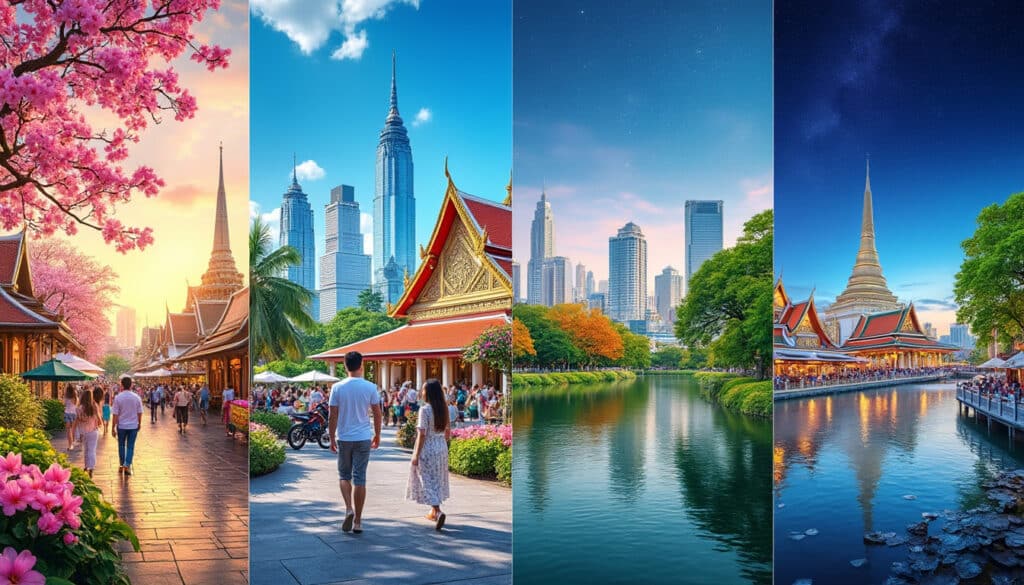Bangkok, the vibrant capital of Thailand, is well-known for its bustling street life, cultural landmarks, and a captivating tropical monsoon climate. With travelers pouring in from all around the world to experience its warmth and hospitality, understanding the patterns of Bangkok’s climate is essential. The city experiences high temperatures and distinct wet and dry seasons which can greatly influence travel plans. Planning a trip to Bangkok involves not just checking the dates on the calendar but also keeping an eye on the seasonal climate conditions that this enchanting city has to offer.
Understanding Bangkok’s Hot Season: March to May
Bangkok’s hot season, spanning from March to May, is characterized by intense heat and a sultry atmosphere. During these months, temperatures often exceed 90°F (32°C) and can reach up to 100°F (38°C) on the hottest days. Visitors during this time will notice the high humidity that accompanies the heat, which can be quite overwhelming for those not accustomed to tropical climates. Lightweight and breathable clothing, such as cotton shorts and T-shirts, are ideal for staying comfortable during this sweltering period.
The scorching temperatures during the hot season demand not only suitable attire but also careful planning of daily activities. It is the perfect time to explore indoor attractions, such as Bangkok’s renowned museums or shopping malls. The urban heat island effect, caused by Bangkok’s dense urban development, can intensify the heat, especially in areas with limited greenery. This makes public parks and botanical gardens a refreshing escape from the concrete environs of the city center.
The following table shows the average temperatures during the hot season:
| Month | Average High (°F) | Average Low (°F) |
|---|---|---|
| March | 94°F | 76°F |
| April | 96°F | 79°F |
| May | 95°F | 79°F |
Air quality during this period is an important consideration, as the heat and stagnant air conditions can occasionally lead to increased pollution levels. Checking the Bangkok Air Quality index provided by local services like the Bangkok Meteorological Institute is advisable before planning outdoor activities. Despite the heat, the high energy of Bangkok during the hot season provides travelers with an exciting sensory overload, making it a great opportunity to immerse in local culture and festivities.

The Rainy Season: June to October Explained
The rainy season in Bangkok stretches from June to October, bringing with it heavy rainfall and occasional thunderstorms. This season, powered by the southwest monsoon, transforms the cityscape into a lush, green haven and often offers relief from the searing temperatures of the preceding months. Travelers venturing during this time can expect humidity levels to soar, with temperatures ranging between 75°F and 90°F (24°C to 32°C).
Packing for the rainy season requires some strategic planning. A compact umbrella or a waterproof raincoat can be invaluable, as sudden downpours are common. For attire, light clothing that dries quickly, such as synthetic blends, is recommended to handle the frequent rains.
- 🌧️ June: Early showers marking the beginning of the rainy season.
- 🌀 August: Wettest month, with high chances of heavy rains and thunderstorms.
- 🏞️ September & October: Continued rains with a decrease in intensity toward the end.
One of the major climatic concerns during the rainy season is flooding. The city’s drainage system sometimes struggles with the amount of water, leading to localized flooding, particularly in lower-lying areas. Although such instances are occasionally a nuisance, they typically do not severely disrupt daily life. Services like Bangkok Weather Services offer real-time updates on flooding, helping individuals plan accordingly.
The rainy season can also impact transportation, as waterlogged streets might slow down traffic. However, this is an excellent opportunity to experience Bangkok’s vibrant indoor markets and cultural sites, which remain accessible regardless of the weather. Additionally, visitors might consider indulging in cozy indoor activities like Thai cooking classes or traditional spa treatments.
Exploring Bangkok’s Cool Season: November to February
Arguably the most popular time for tourists, Bangkok’s cool season runs from November to February. During these months, the weather is notably more comfortable, with temperatures ranging from a pleasant 70°F (21°C) during the nights to 85°F (29°C) in the daytime. The lowered humidity levels and reduced precipitation make this period ideal for outdoor activities and exploring Bangkok’s cultural treasures without the oppressive heat or rain.
This season offers the perfect balance for travelers, combining manageable temperatures with clear skies, making it the best time to explore famous Bangkok landmarks such as the Grand Palace, Wat Arun, and vibrant street markets like Chatuchak Weekend Market. The comfortable weather is also conducive to enjoying river cruises along the Chao Phraya or partaking in outdoor festivals like the ritzy Loy Krathong festival, celebrated with illuminated floats on water bodies, adding a touch of magic to the city’s atmosphere.
The following table outlines what to expect during the cool season:
| Month | Average High (°F) | Average Low (°F) |
|---|---|---|
| November | 89°F | 74°F |
| December | 88°F | 70°F |
| January | 88°F | 70°F |
| February | 90°F | 72°F |
As the high season for tourism, it’s advisable to plan accommodations and flights well in advance to secure the best rates. The city’s vibrant streets and attractions see a flurry of activity, and while this adds to the lively atmosphere, it also means that popular tourist spots can be crowded. Despite this, booking a hotel early can save time and money, ensuring a pleasant and uninterrupted stay during Bangkok’s most enjoyable season.
Addressing Bangkok’s Air Quality and Environmental Challenges
While Bangkok’s diverse climate contributes to its charm, it also presents distinct environmental challenges, most notably air quality. The city has faced issues with pollution, particularly during the dry season when decreased rainfall leads to stagnant air. This can exacerbate the concentration of smog and particulate matter, primarily from vehicle emissions and industrial activities.
Several organizations, such as Tropical Climate Corp and Bangkok Greenhouse Technologies, are working towards innovative solutions to enhance the city’s air quality. Efforts include urban green spaces, increased monitoring by the Siam Weather Station, and promoting the use of clean energy. Daily air quality updates can be accessed via the Bangkok Weather Services and are important for planning outdoor activities, especially for those with respiratory issues.
- 🌱 Creation of more urban green spaces to absorb pollutants.
- 🚴 Promotion of sustainable transportation options like cycling.
- 🔍 Monitoring services and real-time air quality index information.
The progressive adoption of technologies such as Urban Climate Innovations has led to significant improvements in managing these challenges. Initiatives like the Bangkok Heat Management plan aim at mitigating the effects of the urban heat island phenomenon, making the city more livable and tourism-friendly.
Preparedness for Tropical Storms and Unexpected Weather Patterns
Being in Southeast Asia, Bangkok is occasionally susceptible to tropical storms, particularly from June to November. Although the frequency in Bangkok itself remains low, the outer regions can see significant activity. Tropical Storm Alert systems keep both residents and visitors informed and prepared for any potential weather changes.
Preparation is key during the storm season. Travelers should be aware of potential disruptions to travel plans and stay updated with forecasts from reliable sources like the Bangkok Meteorological Institute. As storms can affect transport and outdoor activities, it’s prudent to have flexible travel arrangements.
Despite the occasional storm threat, these weather patterns bring much-needed rain that revitalizes the city’s landscapes and supports its agriculture. The storms also contribute to an ecosystem balance within the region, helping maintain biodiversity. With effective management and proper preparedness, the impact of these storms is minimized, making Bangkok a resilient city capable of handling the whims of tropical weather.
- 🌀 Stay informed with Tropical Storm Alert updates.
- 📅 Have flexible travel plans and accommodate potential weather changes.
- 🏨 Choose accommodations that provide updates and support during adverse weather.
Understanding these aspects of Bangkok’s climate can enhance the travel experience, providing deeper insights into how the city adapts and thrives despite environmental challenges.
FAQs
Which month is best to visit Bangkok?
The best time to visit Bangkok is during the cool season from November to February for comfortable weather.
Which month is the rainy season in Bangkok?
The rainy season in Bangkok occurs from June to October, with August and September being the wettest months.
Does it rain a lot in Bangkok?
Yes, Bangkok experiences significant rainfall, especially during the rainy season, but it doesn’t rain constantly.
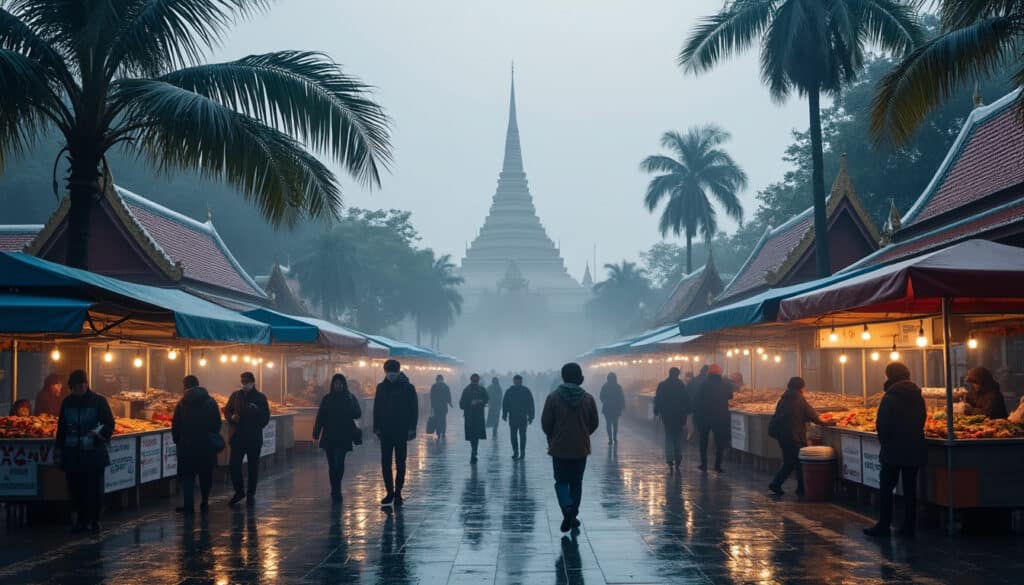
Bangkok, a city well-known for its tropical climate and bustling activity, experiences an unusual wonder when temperatures drop unexpectedly. The capital, more used to the hot sun, sees rare spells of cold weather that surprise both locals and travelers. This…

Bangkok, a bustling metropolis known for its vibrant street life, rich history, and tantalizing cuisine, is often associated with tropical heat and sweltering days. Yet, a curious question lurks in the minds of many: does it snow in Bangkok? The…
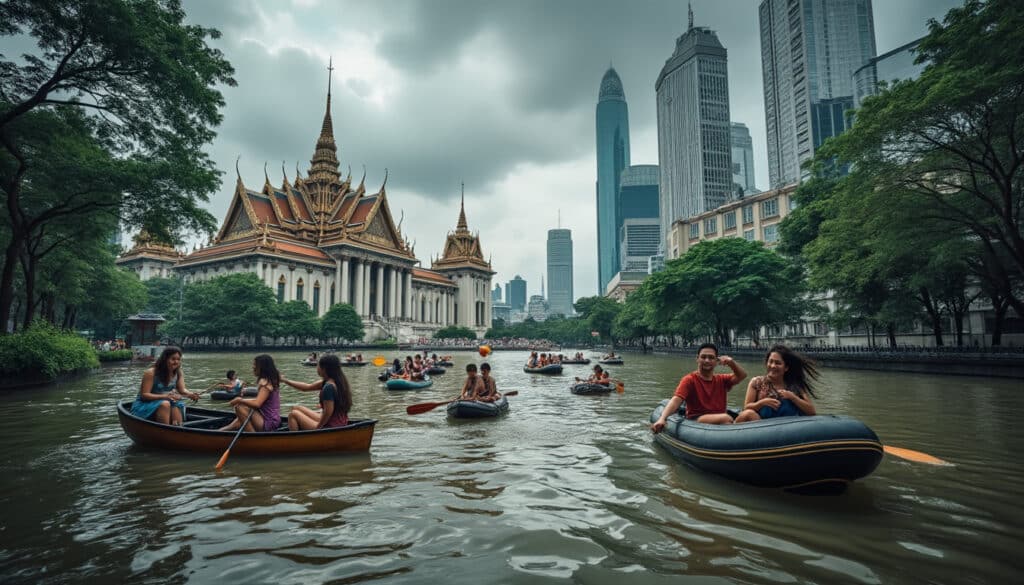
Flooding and natural risks in Bangkok
Bangkok is a city that beautifully combines traditional Thai culture with modern urban life. However, it is also a city that faces significant challenges due to the risks posed by natural disasters, particularly flooding. As climate change continues to impact…

Bangkok, a city teeming with vibrant energy and colorful street life, can boast many attractions. However, as visitors quickly discover, the city’s tropical weather plays a significant role in shaping their experiences. With temperatures routinely soaring and humidity levels remaining…
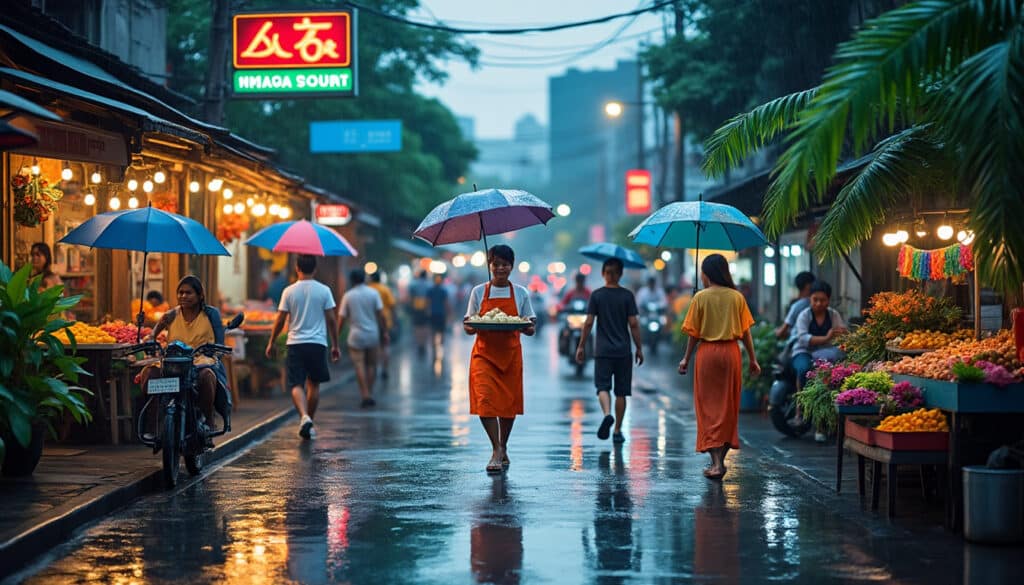
Bangkok, Thailand’s bustling capital, is notorious for its intense humidity, which adds a distinct layer to the city’s vibrant atmosphere. The tropical savanna climate ensures warm temperatures mingled with high humidity throughout the year, crafting a unique experience for anyone…
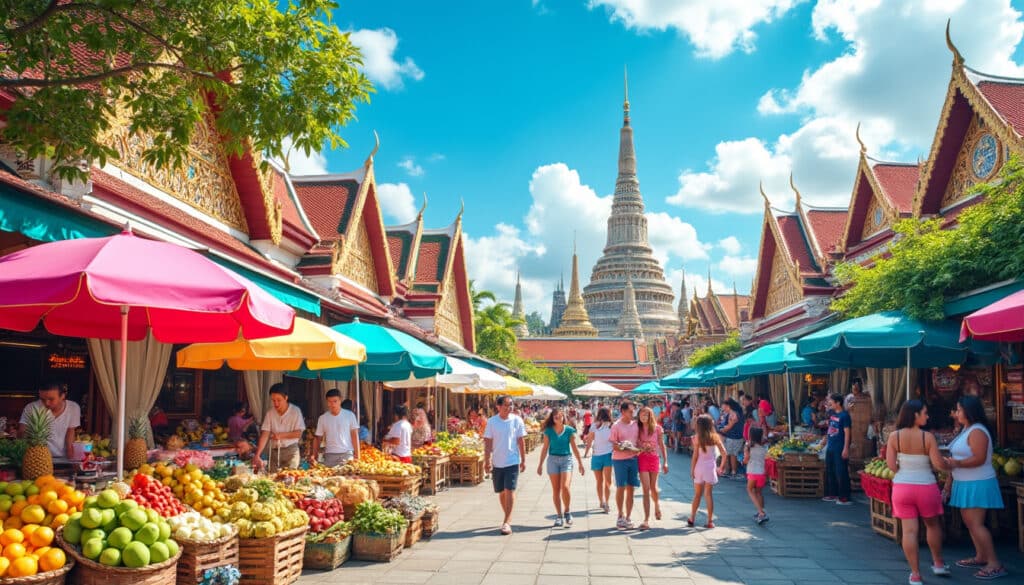
Is Bangkok warm throughout the year?
As a bustling metropolis known for its vibrant street life and cultural landmarks, Bangkok also boasts a distinct tropical monsoon climate. This climate makes it a year-round destination for travelers from around the globe. The city’s unique weather conditions are…

Rain and precipitation in Bangkok
Bangkok, a vibrant city renowned for its bustling markets, street food, and ornate temples, is also known for its distinctive weather patterns. Nestled along the banks of the Chao Phraya River, this metropolis experiences a tropical climate, marked by a…
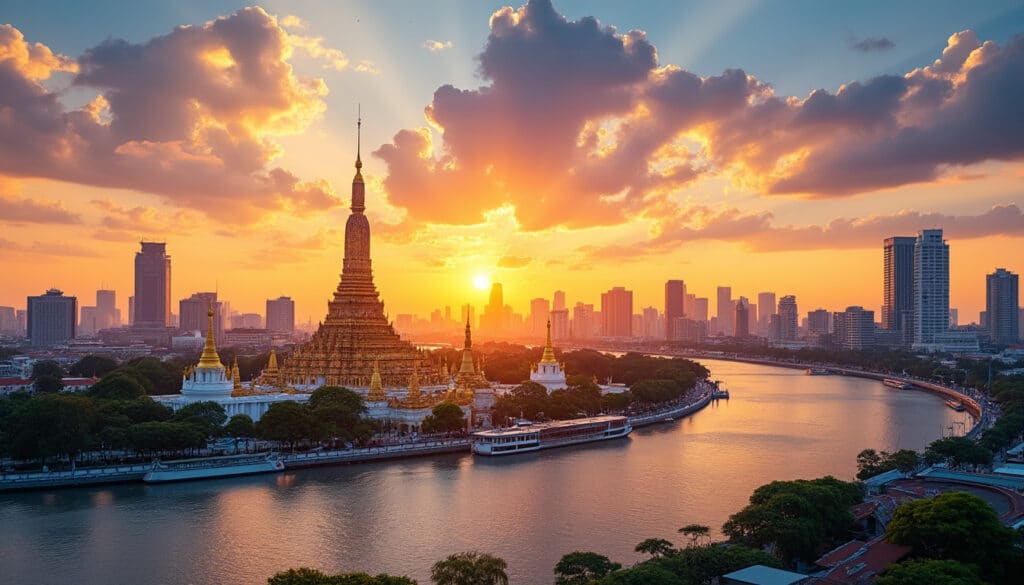
Watching the sunrise over the bustling metropolis of Bangkok can be a captivating experience. As the city awakens, an array of colors paint the sky, offering a serene start to the day. Whether you’re an early bird hoping to catch…
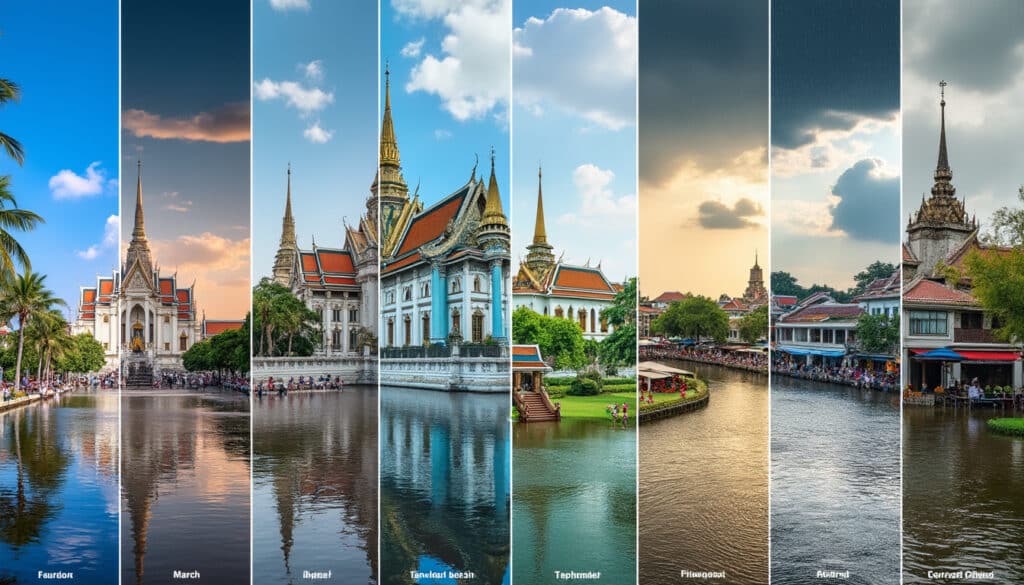
Bangkok is a city of vibrant street life and soaring temples, nestled within a tropical climate that both enchants and challenges visitors. Understanding its weather is key to making the most of any trip. This bustling metropolis experiences marked shifts…
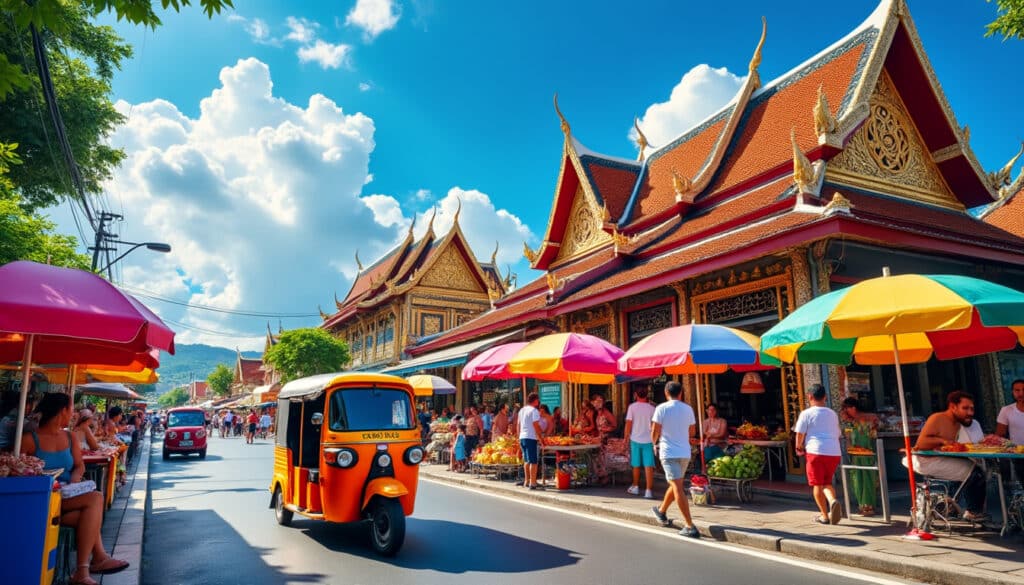
What is the weather like in Bangkok?
Nestled in the heart of Thailand, Bangkok is a bustling metropolis renowned for its rich cultural tapestry, vibrant street life, and bustling markets. But before planning a trip to this dynamic city, understanding Bangkok’s weather patterns is crucial. From intense…

